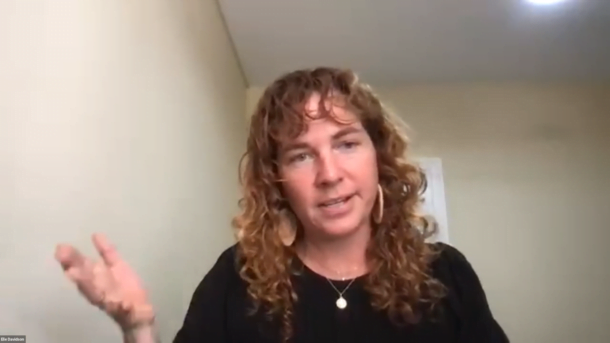Watch Danièle Hromek yarning with Francoise Lane and Elle Davidson about designing for cultural representation and safety.
Get started by reading the session description below and watching the trailer – Elle Davidson on the role of the built environment in supporting cultural safety.
preview
Please log in to your account to purchase access to the full recording, or to use a code. If you do not have an account, you can register here.
1 formal point on completion of the CPD questions.
Refer to the Learning Objectives for Deadly Djurumin Yarns.
Purchase access to the full recording via Vimeo on demand. (See below for Parlour Collective and concession codes, along with CPD details.)
White is not Neutral
For First Nations Peoples, culturally safe spaces are environments where First Nations histories are visible, First Nations identities are supported, and First Nations experiences are respected. Designing for cultural safety is part of understanding that whiteness is not neutral, and white is not the starting point of space nor design on this continent. However, non-Indigenous values currently guide the built form and planning as well as the methods of designing.
To reflect the true histories of place and enable Country-centred design, and to ensure Country and community can genuinely be part of the design process, cultural safety must be part not only of the end result but also the process of design.



So, what does it mean to feel seen, heard and culturally safe? How can the built environment support cultural safety? What role do non-Indigenous people have in ensuring cultural safety for Indigenous people? In the fifth Deadly Djurumin Yarn, Danièle Hromek, Francoise Lane and Elle Davidson pick up where the previous yarn left off, exploring what cultural safety means, and offering valuable advice on how non-Indigenous people can be more respectful and aware of the importance of cultural safety.
As Elle Davidson explains, “For me it’s about being intentional about understanding Country and giving space and time to do that cultural values mapping and understanding the cultural landscape before you make decisions about what should go where or how Country should be engaged with.”
Francoise advises, “For designers who really want to pursue what cultural safety is, it’s about knowing who the traditional owners are, having a relationship with them, getting to know them, going to Indigenous events, so that you’re familiar with what the struggles are, reading those books, becoming aware of the the histories and the policies that have impacted the nations across Australia.”
Throughout this important conversation, our speakers reinforce the importance of early engagement with Community and putting First Nations principles first, the value of building authentic, long-lasting relationships, and the need for non-Indigenous people to go on their own journey and spend time doing research about place before sitting down with a community.
Tickets
- $38 Parlour Collective (To access this use the promo code Collective at checkout).
- $50 General
- $11 Concession (anyone who needs it – students, those not working, part-timers etc. To access this use the promo code Concession at checkout.)
We operate on an honesty system – select the ticket type that aligns with your circumstances. If you haven’t yet joined the Parlour Collective, join now to access discount pricing and many other benefits, and to support Parlour’s ongoing work!
Purchase access through Vimeo on demand, or via the video embedded above.
The proceeds will help support Deadly Djurumin activities. If you represent an Aboriginal organisation or a teaching institution, please contact Parlour to obtain access at no cost.
CPD
1 formal point on completion of the CPD questions.
Once completed, you will receive an email with your responses. Please keep this for your records – it provides the evidence of attendance and completion for the session. Note: a separate CPD Certificate will not be sent. If you can’t find the email remember to check your spam folder.
The series-wide learning outcomes are as follows:
- To increase knowledge of Country and Cultural Authority among built environment practitioners
- To improve understanding of the roles and experiences of of Indigenous practitioners
- To increase understanding of authorship in relation to cultural knowledge and the implications of this in design contexts
- To develop understanding of working respectfully and effectively with Traditional Custodians and Knowledge Holders
- To increase understanding of the impact of design projects on Country
- To support respectful and meaningful communication
The Deadly Djurumin Yarns are presented as a collaboration between Parlour and Deadly Djurumin. This session was recorded online on Friday 4 March 2022.





















